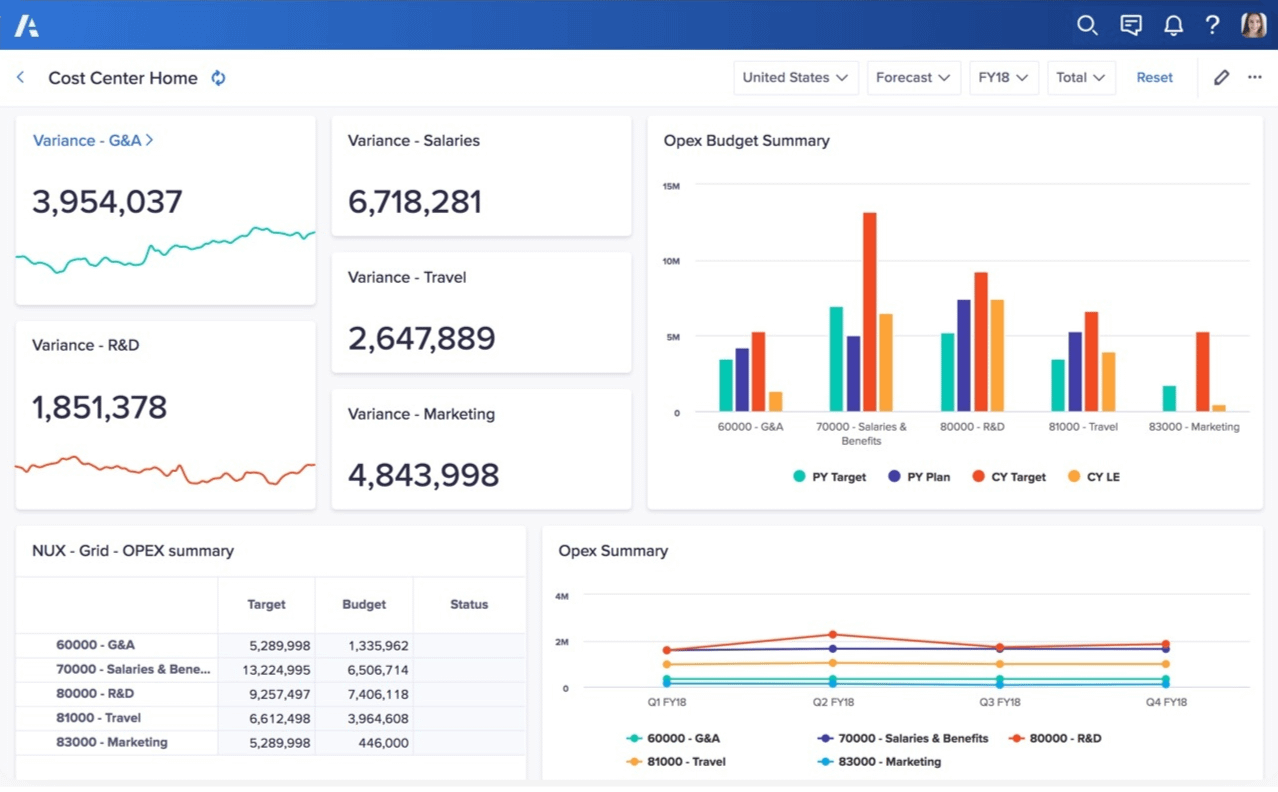Working within limits
Amidst the challenges of financial planning, budgeting, and forecasting, Anaplan stands out for its robust capabilities, offering organisations a comprehensive platform for Enterprise Performance Management (EPM).
Yet, as many finance professionals have encountered, Anaplan’s workspace limitations can pose challenges to optimising its use. This article explores these limitations and outlines strategies to navigate and overcome them effectively.

Understanding Anaplan’s Workspace Limitations
Anaplan’s workspace, while powerful, comes with its set of constraints—primarily size and capacity issues—that can impact the efficiency of financial and commercial planning processes. These limitations often manifest as challenges managing expanding datasets, hindering the ability to scale models effectively, incorporate new analytical use cases, and maintain optimal performance, ultimately leading to delays in reporting and decision-making processes.
Identifying the Impact on Financial Operations
Space limitations can severely constrain the ability to scale financial models, develop additional models for nuanced analysis, or perform ad-hoc analyses that require significant data breadth. For financial planning and analysis (FP&A) teams, this restriction means a diminished capacity to expand their analytical scope or quickly adapt models in response to market volatility or internal demands for strategic pivots.
Consequently, agility in making informed decisions based on comprehensive data analysis could be notably compromised.

Strategies to Navigate Workspace Limitations
1. Aligning Model Granularity with Business Planning Levels
A critical first step in optimising your Anaplan workspace involves aligning the granularity of your models with the specific planning needs of your business. Engaging in discussions with FP&A managers is essential to determine the optimal level of detail required for strategic decision-making. This alignment ensures that your models are not encumbered with unnecessary data, freeing up valuable space and enhancing model performance. The best time to do this is at the initial planning phase of any build, however you can retrospectively course-correct along the way – it’s one of the beauties of Anaplan!
2. Conducting Comprehensive Model Reviews & Regular Maintenance
Conducting a thorough review of your existing Anaplan models is imperative in the optimisation process. This process identifies and eliminates superfluous modules and line items that no longer serve a purpose in your current planning framework. Such a review not only clears up space but also simplifies the model structure, making it easier to manage and update. We have encountered many models where historical data has been retained for ad-hoc reporting which is no longer required but eats up costly storage space and reduces efficiency. Instead, take a copy of the model and archive it; doing so doesn’t take up your workspace allocation.
3. Simplifying Data Structures through Reduced Dimensionality
Reducing the dimensionality of your Anaplan models presents another avenue for overcoming workspace constraints. By evaluating the necessity of each dimension within your models, you can identify areas where complexity can be minimised without sacrificing analytical depth. This strategy not only conserves workspace but also significantly improves calculation times, enabling more efficient planning cycles.
4. Leveraging Subsets to Reduce Cell Count
Subsets are a really useful tool in ensuring your modules are as tight as they can be. By using the subset function on General Lists in Anaplan, you can restrict items present in a list to only relevant items. For example, if you are running a P&L at the account code level from the full Chart of Accounts, you can subset revenue accounts for revenue modelling, cost lines for cost modelling, and so on, as opposed to using the entire list of accounts. By doing this across the board (such as ensuring only active cost centres are present etc.) means you’re only creating cells in Anaplan you absolutely need.

5. Archive Old & Test Models
During the development lifecycle, it’s entirely likely you produce a few test models, or even take model snapshots along the way to retain a model’s functionality you’re happy with at a certain point in time. In this instance, models that aren’t specifically required day to day can be archived. Archived models don’t contribute to your workspace allocation, and there is no limit to the number of archived models you can retain. Keep in mind though, if you ever do need to bring those back online, you will need the space available to have your current model and the archived model back online in your workspace, so you may need to archive your current model to bring an archived model out of archive!

6. Follow Anaplan Best Practice Around System Modules
Inevitably you’ll need to stage data and or pull-in mappings and it’s easy to fall into the habit of doing this on the fly in each module you create. Instead, consider Anaplan Best Practices as set by the Anaplan OEG and create central system modules to hold mappings. The rule of thumb is, if the operation you’re creating is going to be used more than once, centralise it so you only create one line item to manage it, and reference it downstream. It’s worth considering this even if you’ll only use that reference once for the purpose of keeping your modules, line items and mappings all succinctly organised and easily referenced in future!
7. Think about Calculation Logic
As a developer, sometimes you can get developers block. It’s similar to writers block, where you have a tricky calculation with a few steps that need ironing out but are difficult to implement. For the purpose of development, it’s perfectly acceptable to split out steps into individual line items so you can track the result of each calculation. However, this can sometimes unecessarily expand the number of line items beyond what is needed. In this case, once you’ve solved the problem, revisit the logic and see if you can either condense it into fewer line items, or remove superfluous steps along the way.
Keep in mind however, while condensing logic line items can help drastically with saving space, it can come at the cost of performance, where longer formulae condensed into fewer lines put more load on the calculation engine, so this one is a balancing act.
Pushing the Limits of Possible
The above presents just a few tips and tricks to working within the Anaplan Workspace Limits; there are plenty of other ways a model can be optimised for both space and performance, and some instances will inevitably be bespoke to the configuration of Anaplan you’re building.
As we navigate the complexities of Anaplan workspace limitations, initiating those critical discussions within your organisation with key commercial stakeholders is essential. By understanding future business considerations—be it expansion plans, potential acquisitions or new scenarios—we ensure any solution is not just a temporary fix but a strategic asset.
Our consultancy specialises in conducting comprehensive optimisation studies, guaranteeing the solutions we architect are tailor-made and future-proof. If you’re looking to overcome workspace challenges and ensure your Anaplan models are fit for purpose, we invite you to book a call with us to discuss more.
Together, we can build the right solution that aligns with your strategic goals, enabling your organisation to thrive in an ever-evolving landscape.
We create solutions tailored to your individual needs.
Unbiased Advisory
We take pride in delivering impartial and objective guidance, we prioritise your best interests, offering transparent and impartial advice that aligns with your unique needs and goals. You can be confident that our recommendations are based on what is right for you, ensuring a reliable and trustworthy partnership.
A Partner Through the Entire Journey
Count on us as your trusted delivery partner in your solution lifecycle. We take great pride in our commitment to delivering services with the utmost integrity and reliability. Our dedicated team of experts is here to provide you with transparent and impartial guidance, ensuring your delivery needs are met seamlessly.
Upcoming Content…
In the coming weeks, we will add further content with insights into the wonderful world of EPM & technological solutions with a view of equipping you and your finance teams with knowledge on the possibilities that strong EPM solutions can bring to your business. Stay tuned for more!
Ready to discuss how we can help you?
If it sounds like we can help you it’s time to have a chat. Get in touch with us via one of the methods below.









